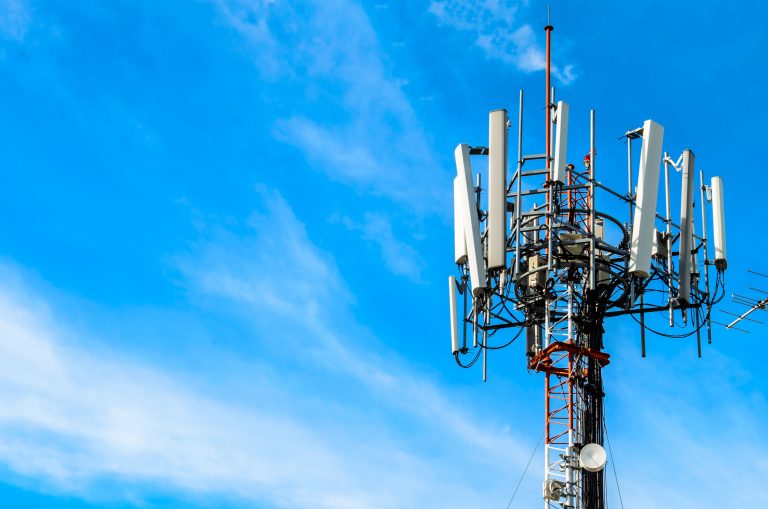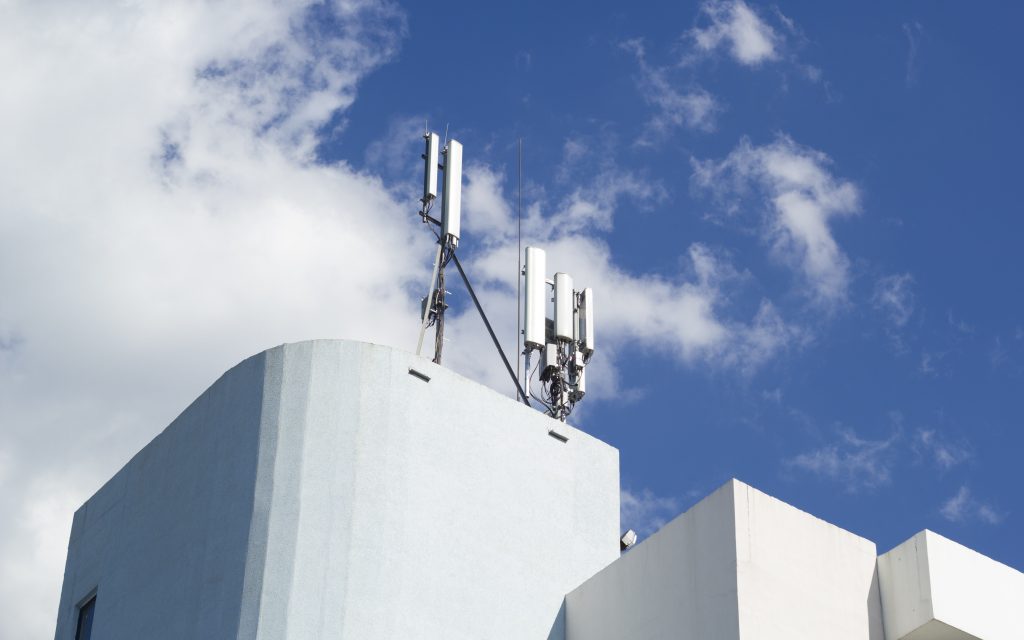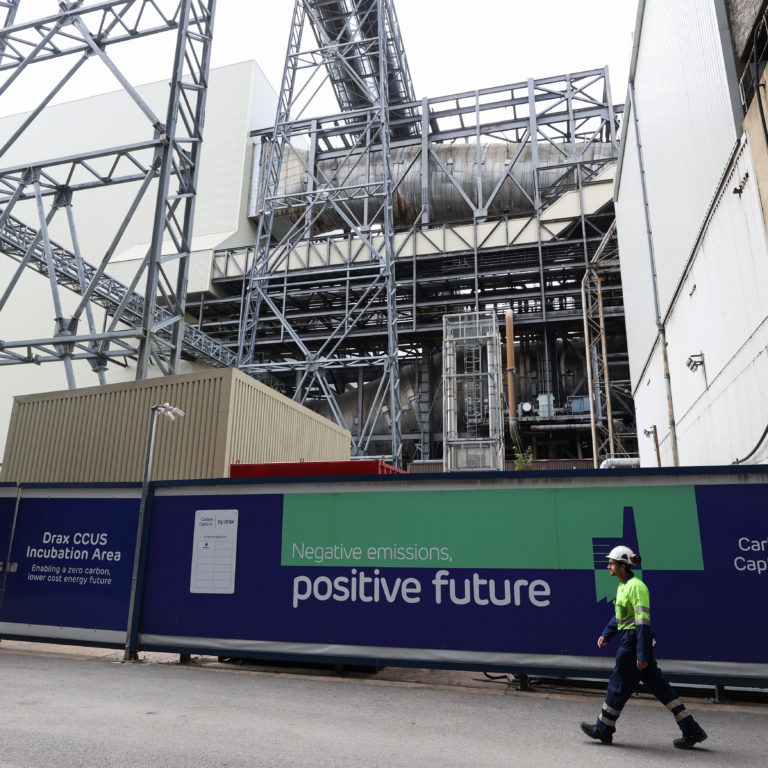What should be made of the 5G gap? It’s the difference between what some commentators are expecting to happen thanks to this new technology and what others perhaps more realistically believe is possible in the near future.

What we call 5G is the fifth generation of mobile communications, (following 4G, 3G, etc.). It promises vastly increased data download and upload speeds, much improved coverage, along with better connectivity. This will bring with it lower latency – potentially as low as one millisecond, a 90 per cent reduction on the equivalent time for 4G – and great news for traders and gamers, along with lower unit costs.

Trading desk at Haven Power, Ipswich
The latest estimates predict that 5G will have an economic impact of $12 trillion by 2035 as mobile technology changes away from connecting people to other people and information, and towards connecting us to everything.
Some experts believe the effects of 5G will be enormous and almost instantaneous, transforming the way we live. It will have a huge effect on the internet of things, for instance, making it possible for us to live in a more instant, much more connected world with more interactions with ‘smart objects’ every day. Driverless cars that ‘talk’ to the road and virtual and augmented reality to help us as we go could become part of our everyday lives.
Others see 5G as a revolution that will begin almost immediately, but which could take many years to materialise. The principal reason for this is the sheer level of investment required.
The frequencies being used to carry the signal from the proposed 5G devices can provide an enormous amount of bandwidth, and carry unimaginable amounts of data at incredible speeds. But they cannot carry it very far. And the volume of devices connected to this network will be enormous. The BBC estimates that between 50 and 100 billion devices will be connected to the internet by 2020 – more than 12 for every single person on Earth.
So in order to support the huge increase in connectivity that is anticipated a reality, there will be a need for a comparably large increase in the number of base stations – with as many as 500,000 more estimated to be needed in the UK alone. That’s around three times as many base stations as required for 4G.
To carry the amount of data anticipated without catastrophic losses in signal quality will require the stations to be no more than 500m apart. While that may be technically possible in cities, it will only happen as a result of huge amounts of investment. And what will happen in the countryside, with its lower population density? It seems doubtful in the extreme that any corporation will regard it as a potentially profitable business decision to build a network of base stations half a kilometre apart in areas where few of their customers live. And that’s without taking into account the town and country planning system or the views of residents, who may not welcome new base stations near their homes.
Until this year, the only two workable examples of functional 5G networks are one built by Samsung in Seoul, South Korea, and another by Huawei in Moscow in advance of the 2020 Football World Cup. Although the first UK mobile networks have now begun to offer the new communications standard, 5G is still clearly a long way from being able to deliver on its potential.
What will 5G mean for the world of energy?
A report from Accenture contains a number of predictions about how 5G may change the energy world by helping to increase energy efficiency overall and accelerating the development of the Smart Grid.
-
5G uses less power than previous generations of wireless technology
This means that less energy will be used for each individual connection, which will take less time to complete than with 4G devices, thereby saving energy and ultimately money too. It is important to remember that even though such savings will be significant, they will need to be offset against the huge global increase in communications through 5G-connected devices.
-
Accelerating the Smart Grid to improve forecasting
5G has the potential to help us manage energy generation and transmission more efficiently, and therefore more cost-effectively.
The report’s authors anticipate that “By allowing many unconnected energy-consuming devices to be integrated into the grid through low-cost 5G connections, 5G enables these devices to be more accurately monitored to support better forecasting of energy needs.
-
Improve demand side management and reduce costs
“By connecting these energy-consuming devices using a smart grid, demand-side management will be further enhanced to support load balancing, helping reduce electricity peaks and ultimately energy costs.”
-
Manage energy infrastructure more efficiently and reduce downtime
By sharing data about energy use through 5G connections, the new technology can help ensure that spending on energy infrastructure is managed more efficiently, based on data, in order to reduce the amount of downtime.
And in the event of any failure, smart grid technology connected by 5G will be able to provide an instant diagnosis – right to the level of which pylon or transmitter is the cause of an outage – making it easier to remedy the situation and get the grid up and running again.
5G could even help turn street lighting off at times when there are no pedestrians or vehicles in the area, again reducing energy use, carbon emissions, and costs. Accenture estimate that in the US alone, this technology has the potential to save as much as $1 billion every year.
More data, more power
Although 5G devices themselves may demand less power than the telecoms technology it they will eventually replace, that doesn’t tell the whole story.
More connected devices with more data flowing between them relies on more data centres. This has led some data centres to sign Power Purchase Agreements to both reduce the cost of their insatiable desire for electricity and also ensure its provenance.

Data centre
As well as data centres, the more numerous base stations needed for 5G will consume a lot of power. One global mobile network provider says just to operate its existing base stations leads to a £650m electricity bill annually, accounting for 65% of its overall power consumption.

Base station tower
Contrary to the findings of the Accenture report, a recent estimate has put the power requirement of an individual 5G base station at three times that of a 4G. Keeping in mind that three of these are needed for every existing base station, the analysis by Zhengmao Li of China Mobile, suggests a nine-fold increase in electricity consumption just for that key part of a 5G network.
With the Great Britain power system decarbonising at a rapid pace, the additional power required to electrify the economy with new technologies shouldn’t have a negative environmental impact – at least when it comes to energy generation.
However, as we use ever-more powerful and numerous devices, we need to ensure our power system has the flexibility to deliver electricity whatever the weather conditions. This means a smarter grid with more backup power in the form of spinning turbines and storage.






















